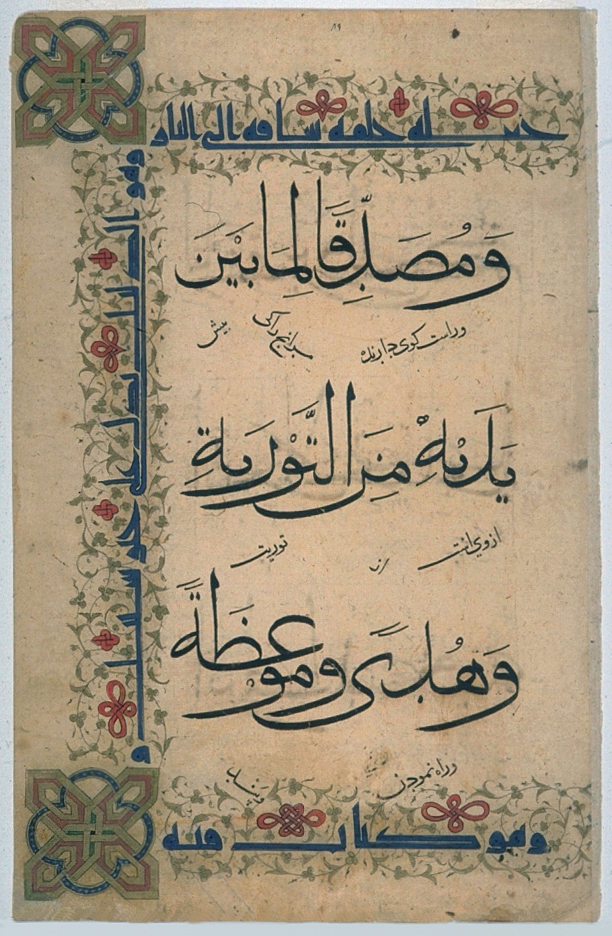Activity
Space Sculpture Inspired by Afruz Amighi’s My House, My Tomb
In this activity, you will create your own “space sculpture” out of found objects, light, and shadow.

Page from a Manuscript of the Koran, approx. 1330-1340. Central Asia or Turkey. Ink, colors, and gold on paper. Gift of the Todd Williams Memorial Fund and the Society for Asian Art, B87D7.
The training to become a master Islamic calligrapher (hattats) symbolizes a religious pilgrimage. The pursuit to acquire exquisite penmanship brought one closer to spiritual perfection and to God. This is evident in the tradition of passing down knowledge from teacher to pupil. Following the structure set by the spiritual teaching of Sufism, it is appropriately called the “chain of transmission.” It is through this training process that individual styles have been preserved and may be traced back through the centuries from a long lineage of calligraphers.
The journey to becoming a master calligrapher required patience, dedication, and a lifetime of practice. At a young age, children were introduced to calligraphy in school. There they would become familiar with the proportions and general aesthetics of the art. A student who exhibited natural skill and promise would be encouraged to pursue private instruction from a teacher. Even students who could not afford private lessons could obtain instruction. Osman started the tradition of selecting a day of the week to provide instruction to students who could not afford to pay. This practice endures to this day.
The process of learning calligraphy begins with the practice of takild. The student carefully watches as the teacher writes a mesk (model). A beginner receives a mufredat (basic lesson) made up of single or double letters. The next level of lesson is called murekkebat (words and Koranic verses). The students then takes the mesk, copies it, and then presents it to the teacher. With the great scrutiny, the teacher corrects the mesk by writing the correct form of a letter underneath the student’s letter. The teacher also writes in with the correct number and placement of rhomboid dots (nokta) to guide the students in correct proportions. This is returned to the students who practice and repeat the exchange until the strokes are perfected. The next step is to to try to create the arrangement of phrases in the paper in pleasing compositions.
After three to five years of weekly lessons, a student may graduate by earning an icazetname (permission document or diploma). The teacher chooses the work of a great master for the student to copy. The finished work is presented to a jury of master calligraphers who award the student who has demonstrated artistic achievement. The teacher completes the ceremony by writing in Arabic on the work,“I give permission to the writer of this beautiful kit’a, [insert student’s name], to sign his name under his work. May God prolong his life and increase his knowledge. I am his teacher.”
The teacher then signs his name and along with the date. From this point forward, the calligrapher may sign an artwork followed by the word “katabau” or “he wrote it.” The icazetname is the highest honor granted a calligrapher.